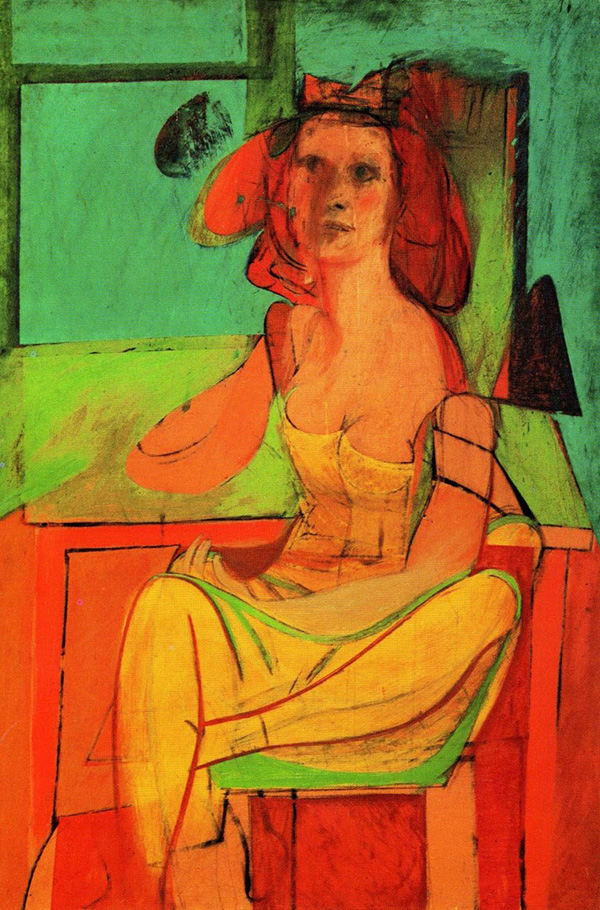 When I was eighteen or nineteen years old and started studying the work of Willem de Kooning, I was mainly interested in the human form as subject matter. Upon acquiring a general, cursory knowledge of his career, including the aggressive Women from the 1950s and the watery figures from the ’60s, I gravitated toward his late ’30s/early ’40s figures. I don’t remember what my thinking or feeling was at the time, but I imagine because the earlier figures tend to be more rooted in actual anatomy, they were more accessible to me. Although I soon came to love the later work as well, Seated Woman, c. 1940, is still among my favorites in an oeuvre that is arguably the strongest of the twentieth century.
When I was eighteen or nineteen years old and started studying the work of Willem de Kooning, I was mainly interested in the human form as subject matter. Upon acquiring a general, cursory knowledge of his career, including the aggressive Women from the 1950s and the watery figures from the ’60s, I gravitated toward his late ’30s/early ’40s figures. I don’t remember what my thinking or feeling was at the time, but I imagine because the earlier figures tend to be more rooted in actual anatomy, they were more accessible to me. Although I soon came to love the later work as well, Seated Woman, c. 1940, is still among my favorites in an oeuvre that is arguably the strongest of the twentieth century.
There were many reasons I was so attracted to this particular piece. I don’t believe I’d ever encountered a painting in which the distinction between the figure and the ground was blurred in such a subtle and engaging manner. The geometric ground suggests an interior with a window, a table, and the chair in which the figure is seated. Her right arm has morphed into a large teardrop shape which could also be an object, possibly a vase or a pitcher, on the green tabletop. The oval shape above that, next to her head, could have initially been her right hand. The method in which the legs are painted, as well as the outlining and visible pentimento, flattens the figure and merges it with the ground. Juxtaposed with the more modeled head, neck, and upper torso, this creates a push/pull dynamic that I found endlessly seductive.
In several ways, Seated Woman is reminiscent of the work of Jean-Augusta-Dominique Ingres, for whom de Kooning never shied away from declaring his admiration. The figure’s elongated left arm resembles a mannequin’s, detached from her body. This fragmentation relates to the anatomical restructuring that Ingres often utilized, and the length of the arm, as well as the composition as a whole, recalls Ingres’s 1816 Portrait of Louis-Nicolas-Marie Destouches. In his drawings, Ingres often left portions of the figure in outline, with no modeling at all, as de Kooning did the legs, here.
De Kooning reportedly once said he’d like to paint like Ingres and Chaïm Soutine – simultaneously. Although in Seated Woman he did not attempt the Soutine side of that unlikely but strikingly enticing marriage – it’s less expressionist and more cubist-inspired – he did succeed in evoking Ingres and producing what was perhaps the first major work of his career. It was also the first painting of his that made me realize why he is considered a master, although when he made it, he was only known to a few painters in the New York City art scene – he wouldn’t even have his first solo show until 1948.
Over forty years after the paint was dry, Seated Woman was a revelation to me, opening my mind to seeing the figure in a whole new way.
